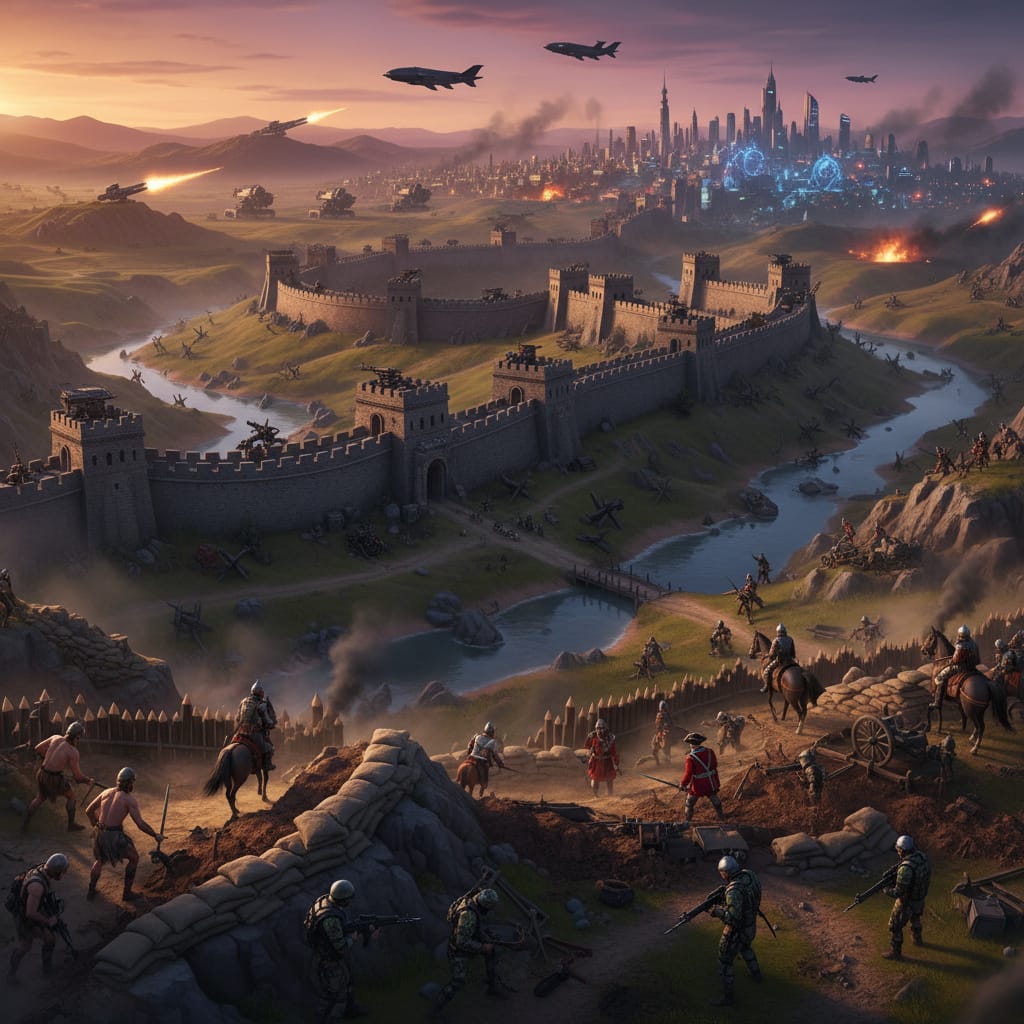In the grand tapestry of Civilization VI, military strategy is a complex dance of positioning, timing, and resource management. The Military Engineer, a unit often overlooked, holds a monopoly on one of the most impactful defensive structures in the game: the Fort. But what if this monopoly was shattered? What if every melee unit, from the humble Warrior to the advanced Mechanized Infantry, could construct this bastion of defense? The game would be irrevocably transformed. This is not a mere tweak to a unit’s ability; it’s a fundamental shift in the very fabric of warfare and expansion in Civilization VI. Analysis on forums shows that such a change would ripple through every era, altering the calculus of aggression, the nature of defense, and the value of terrain itself.
The New Calculus of Early Game Warfare
The early game in Civilization VI is a frantic race for territory and resources. The ability for melee units to build forts would introduce a new layer of strategic depth to this crucial phase.
The End of the Early Rush?
A popular strategy, especially for civilizations with powerful early-game unique units, is the “early rush” – a swift, decisive strike against a neighboring civilization before they can establish a strong defense. According to the player community, the ability for all melee units to build forts would significantly curtail the effectiveness of this strategy. A single Warrior, upon spotting an approaching enemy, could immediately fortify a chokepoint, creating a +4 defensive bonus out of thin air. This would force the aggressor to commit more units and resources to a single engagement, slowing their advance and giving the defender precious time to muster a more robust defense.
The Rise of the “Incremental Advance”
Conversely, many professional gamers suggest that this change would give rise to a new offensive doctrine: the “incremental advance.” Instead of a single, overwhelming rush, players would adopt a more methodical approach, advancing their melee units one tile at a time, building a fort, and then using that fortified position as a staging ground for the next advance. This would create a slow, creeping front line of fortified units, a “Roman road” of defensive structures paving the way for conquest. This strategy, while slower, would be far more secure, minimizing losses and ensuring that captured territory remains firmly under control.
The Transformation of Mid-Game Strategy
The mid-game is where civilizations begin to project their power across the map, and where the ability for melee units to build forts would have the most dramatic impact.
The “Great Wall” of Melee Units
Analysis on forums shows that the ability for melee units to build forts would lead to the creation of vast, sprawling defensive networks. A player could, with a handful of Swordsmen or Musketmen, create a “Great Wall” of forts along their border, making a conventional invasion all but impossible. This would force players to adopt more creative strategies for breaking a stalemate, such as naval invasions, air power, or espionage.
The Power of the “Forward Operating Base”
A popular strategy is the establishment of a “Forward Operating Base” (FOB) – a fortified position deep in enemy territory that can be used to heal units, launch attacks, and exert control over a region. With the ability for melee units to build forts, the creation of FOBs would become a cornerstone of mid-game warfare. A player could, for example, use a Knight to raid an enemy’s trade route, and then have a Swordsman follow up to build a fort on a strategic hill, creating a permanent thorn in the enemy’s side.
The Late-Game Stalemate and the Rise of New Power Dynamics
The late game in Civilization VI is often characterized by a delicate balance of power, where a single mistake can lead to a swift and brutal defeat. The ability for melee units to build forts would further entrench this stalemate, but also create new opportunities for astute players.
The “Maginot Line” Mentality
According to the player community, the ability for melee units to build forts would lead to a “Maginot Line” mentality, where players would invest heavily in creating an impenetrable line of fortifications along their borders. This would make a direct assault a costly and often futile endeavor, forcing players to rely on more indirect means of warfare.
The Primacy of Air Power and Siege
Many professional gamers suggest that in a world where every melee unit is a potential fortress, air power and siege units would become the undisputed kings of the battlefield. A line of forts is of little use against a squadron of Bombers or a battery of Rocket Artillery. This would shift the focus of late-game military production away from melee units and towards these more advanced and specialized units.
The Unforeseen Consequences
The ability for all melee units to build forts would have a number of unforeseen consequences that would ripple through every aspect of the game.
The Devaluation of the Military Engineer
The most obvious consequence would be the devaluation of the Military Engineer. With melee units able to perform one of its most crucial functions, the Military Engineer would be relegated to a more niche role, focused on building roads, airstrips, and other specialized improvements.
The Increased Importance of Terrain
The ability to build a fort on any tile would make the strategic value of terrain even more pronounced. A hill, a forest, or a river crossing would become not just a defensive bonus, but a potential fortress. This would make the careful positioning of units and the strategic use of terrain more important than ever before.
The Impact on Wonder Construction
Analysis on forums shows that the ability for melee units to build forts could have a surprising impact on Wonder construction. A player could, for example, use a line of fortified melee units to protect a vulnerable city that is in the process of building a Wonder, making it all but impossible for an enemy to disrupt its construction.
A New Era of Warfare
The hypothetical scenario of all melee units in Civilization VI being able to build the Fort improvement is more than just a simple “what if.” It’s a fundamental reimagining of the game’s military and strategic landscape. The early rush would be replaced by the incremental advance, the mid-game would be dominated by the “Great Wall” of melee units, and the late game would become a tense stalemate broken only by the overwhelming power of air and siege. This single change would elevate the strategic importance of terrain, devalue the Military Engineer, and force players to adopt new and creative strategies to achieve victory. While it would undoubtedly lead to a more defensive and entrenched style of gameplay, it would also create a new and exciting set of strategic puzzles for players to solve. The battlefield of Civilization VI would be forever changed, and the humble melee unit would become the unlikely architect of a new era of warfare.


